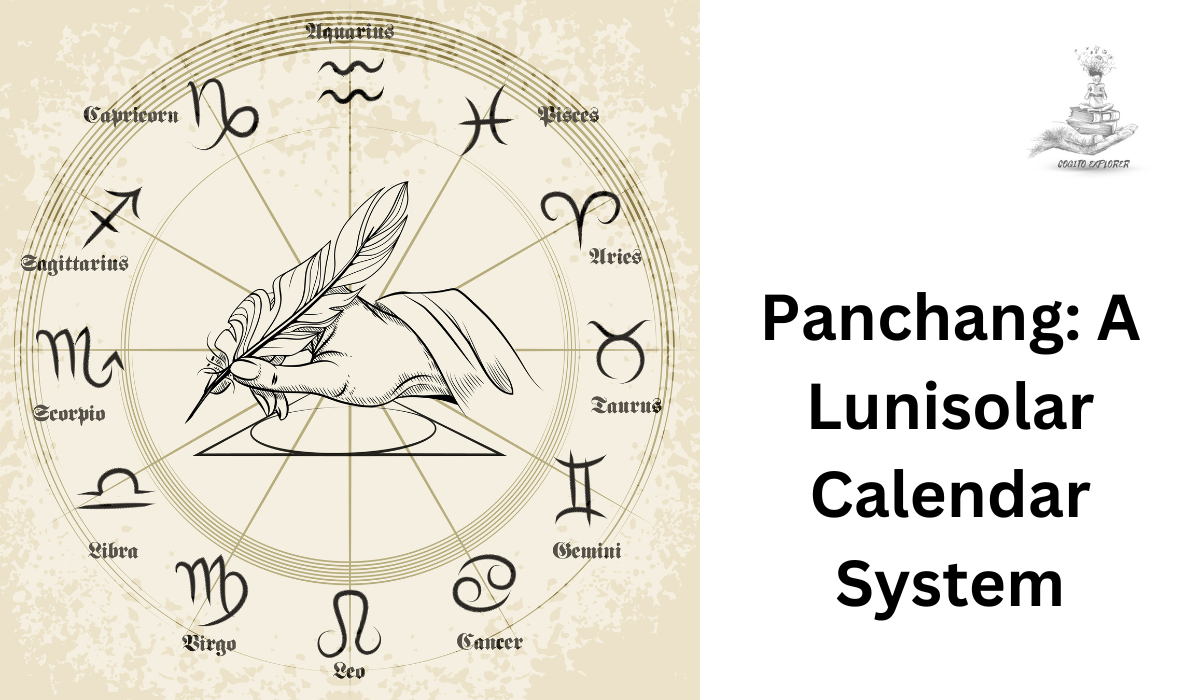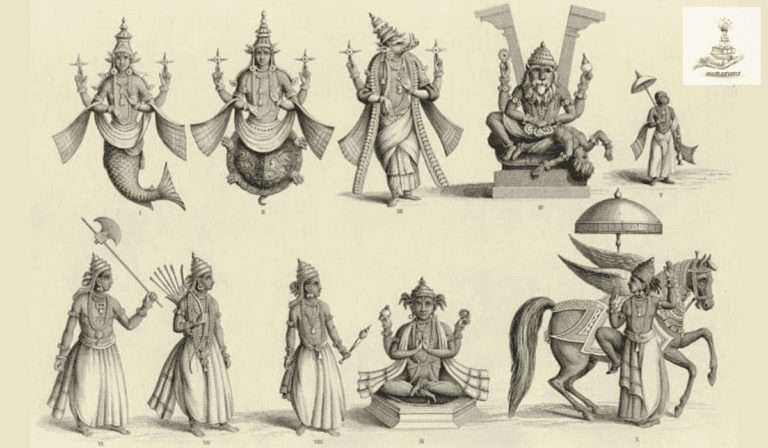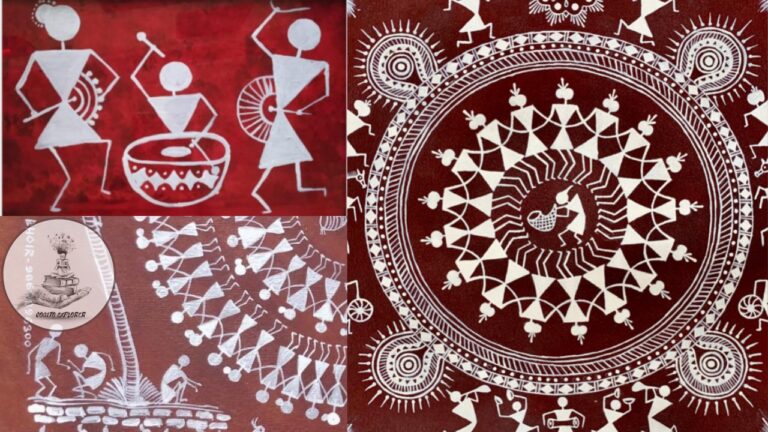Panchang: A Lunisolar Calendar System
Jyotish Shastra, commonly known as Vedic astrology is based on the calculations of the position of the visible planets. It is used as a tool for providing guidance and insight into various aspects of an individual’s life, including career, relationships, health, and spirituality. It is believed that the positions of celestial bodies at the time of an individual’s birth influence their karmic patterns and life events. Jyotish helps in understanding these influences. It identifies planetary combinations (doshas) that may lead to challenges in life. Astrologers use Jyotish to make predictions about future events based on the positions of celestial bodies. Remedial measures, such as gemstone recommendations, rituals, and prayers, are often suggested to mitigate negative influences.
The foundational tool used by Jyotish Shastra for providing essential astrological information such as Tithi, Nakshatra, Yoga, and Karana based on the positions of the planets is known as the Panchang, which is our topic of discussion today.

The Panchang: A Lunisolar Calendar
Panchang is the traditional Hindu almanac that provides comprehensive information about the specific positions of the planets based on which various celestial phenomena, auspicious and inauspicious times, festivals, and other important events are ascertained. The creation of Panchangas involves a deep understanding of astronomical principles and calculations which is a testament to the vast knowledge base the Indian civilization possessed about the universe. Indian astronomers developed both lunar and solar calendars, taking into account the movements of the Moon and the Sun. The lunar calendar (Tithi system) is based on the phases of the Moon, dividing the month into various lunar days or Tithis. The solar calendar (Saura system) is based on the Sun’s position, dividing the year into specific solar months.
The term Panchang is derived from Sanskrit, where Pancha means five, and Anga means limb or part. Therefore Panchang refers to the five fundamental elements or components that make up the traditional almanac or calendar for a specific day. These five limbs according to Vedang Jyotish are Tithi, Vaar, Yoga, Nakshatra, and Karan.
Tithi – The unit of Date
Tithi in Panchang refers to the lunar day and the lunar month is divided into 30 Tithis. Since the Sun and moon revolve in a circular motion (360 degrees) a tithi can be defined as the time it takes for the longitudinal angle between the moon and the sun to increase by 12 degrees. Each Tithi is associated with a specific phase of the moon and is divided into two halves of 15 days each: Shukla Paksha and Krishna Paksha.
Shukla Paksha: This is the waxing phase of the moon, also known as the bright fortnight (towards the brightness of the moon). It begins with the new moon day (Amavasya – sun and moon come together) and continues until the full moon day (Purnima – 180 degrees apart). Each Tithi during Shukla Paksha is associated with increasing illumination of the moon. Shukla Paksha is considered auspicious and is associated with growth, expansion, and positive energy. It is believed that undertaking new ventures or initiating important activities during this phase is more favorable.
Krishna Paksha: This is the waning phase of the moon, also known as the dark fortnight (towards the darkness of the moon). It begins with the full moon day (Purnima) and continues until the next new moon day (Amavasya). Each Tithi during Krishna Paksha is associated with decreasing illumination of the moon. Krishna Paksha is considered a time for introspection, letting go, and detoxification. It is seen as a period suitable for practices like fasting, penance, and self-reflection.
Vaar – The days of the week
Vaar in Vedanta Jyotish is defined as the time between two sunrises. The week in the Hindu calendar is comprised of seven Vaars (days). Each day of the week is associated with a specific planet (visible planets) In Hindu astrology (Jyotish), the influence of these planets on a particular day is believed to have an impact on various aspects of life. The days of the week in the Vaar system are:
- Ravivaar (Sunday): Dedicated to the Sun (Ravi).
- Somvaar (Monday): Dedicated to the Moon (Soma).
- Mangalvaar (Tuesday): Dedicated to Mars (Mangal).
- Budhvaar (Wednesday): Dedicated to Mercury (Budha).
- Guruvaar (Thursday): Dedicated to Jupiter (Guru).
- Shukravaar (Friday): Dedicated to Venus (Shukra).
- Shanivaar (Saturday): Dedicated to Saturn (Shani).
Yoga – The Alignments (Motion)
Yoga in Panchang is a specific combination of planets and their alignments in a person’s birth chart. The term itself means a union or a combination. These planetary combinations are believed to influence an individual’s life, personality, and destiny. Yogas are associated with specific characteristics and are used to assess the quality of time for various activities. There are numerous Yogas mentioned in classical astrological texts, each with its unique characteristics and effects. In Vedic astrology, there are 27 Yogas. Each Yoga represents a unique blend of solar and lunar influences, contributing distinct qualities to an individual’s personality and life. These Yogas are derived from dividing the zodiac into 27 equal parts, each corresponding to one of the 27 Nakshatras
- Dhana Yoga: This Yoga is associated with wealth and prosperity.
- Raja Yoga: Raja Yoga signifies a royal or regal combination that leads to power and authority.
- Bhadra Yoga: This Yoga is associated with intelligence and wisdom. It is formed when Mercury is in a favorable position, usually in a Kendra (angular house) or Trikona (trine).
- Malavya Yoga: Malavya Yoga is related to comforts, luxuries, and a pleasant lifestyle. It is formed when Venus is in its sign or exalted in a Kendra house.
- Gaja Kesari Yoga: This Yoga is formed when Jupiter is in a Kendra house from the Moon, or it is in conjunction with or aspected by the Moon. It enhances wisdom, intellect, and spiritual inclinations.
- Hamsa Yoga: Hamsa Yoga is formed when Jupiter is in a Kendra house from the Ascendant. It is associated with righteousness, virtue, and spiritual inclinations.
- Parivartana Yoga: Also known as a mutual exchange, this Yoga occurs when two planets exchange signs in a chart. It can create powerful combinations influencing the houses ruled by the exchanged planets.
- Viparita Raja Yoga: This Yoga arises from challenging situations, setbacks, or adversities that ultimately lead to success and a rise in status.
- Kemadruma Yoga: Kemadruma Yoga occurs when there are no planets on either side of the Moon, leading to a sense of isolation, financial difficulties, and challenges in life.
- Saraswati Yoga: Saraswati Yoga is formed when Mercury is in a Kendra house and is associated with or aspected by a benefic planet. It enhances intelligence, education, and communication skills.
- Neechabhanga Raja Yoga: This Yoga occurs when a debilitated planet is in a sign owned by a friendly or exalted planet, canceling the debilitation and bringing about positive results.
Common questions such as “When will I get a job”, and “When will I get married” or questions related to global events like “Who will win this World Cup”, and “Who will win this election” etc. can be answered by accessing these yogas.
Nakshatras: The Distance of Planets
Nakshatras are defined as specific divisions of the eclipse through which the Moon passes during its monthly orbit. The Nakshatras are used for various purposes, including determining auspicious timings for ceremonies and events. The Nakshatras play a crucial role in horoscope analysis and are used to determine various aspects of an individual’s personality, behavior, and life events. There are 27 Nakshatras, and each Nakshatra is further divided into four steps, known as Padas or Charans. The 9 charans make up a zodiac sign thus 27 Nakshatras form 12 zodiac signs.
Here is a list of the 27 Nakshatras and their general characteristics:
- Ashwini: (horse’s head) associated with spontaneity and swiftness.
- Bharani: (Yoni – female reproductive organ) associated with creativity and fertility.
- Krittika: (razor or flame) associated with sharpness and focus.
- Rohini: (chariot) associated with beauty, grace, and sensuality.
- Mrigashira: (deer’s head) associated with curiosity and exploration.
- Ardra: (teardrop) associated with transformation and cleansing.
- Punarvasu: (quiver of arrows) associated with renewal and second chances.
- Pushya: (cow’s udder) associated with nourishment and support.
- Ashlesha: (coiled serpent) associated with cunning and emotional depth.
- Magha: (throne) associated with authority and leadership.
- Purva Phalguni: (hammock) associated with love, pleasure, and entertainment.
- Uttara Phalguni: (bed) associated with compassion and service.
- Hasta: (hand) associated with skillfulness and craftsmanship.
- Chitra: (pearl) associated with beauty, creativity, and divine grace.
- Swati: (young plant) associated with independence and self-sufficiency.
- Vishakha: (decorated gateway) associated with determination and achievement.
- Anuradha: (lotus) associated with friendship, harmony, and devotion.
- Jyeshtha: (circular) amulet, associated with courage and power.
- Mula: (bunch of roots tied together) associated with destruction and transformation.
- Purva Ashadha: (elephant tusk) associated with victory and achievement.
- Uttara Ashadha: (elephant tusk) associated with righteousness and dharma.
- Shravana: (ear) associated with learning and listening.
- Dhanishta: (drum) associated with fame, wealth, and success.
- Shatabhisha: (empty circle or a thousand stars) associated with healing and protection.
- Purva Bhadrapada: (sword) associated with courage and mysticism.
- Uttara Bhadrapada: (snake in a water pot) associated with spirituality and sacrifice.
- Revati: (fish) associated with compassion, nurturing, and protection.
Karan: The Unit of Time
Karans are smaller units of time used for more precise timing of events and divide a Tithi into two halves. There are 11 Karans in a Tithi, and each Karan lasts for approximately 6 hours. The Karans are classified into two categories – Char (moveable) and Sthir (fixed). The first 7 Karans are Char (moving) while the remaining 4 are sthir (still). These are:
- Bava (Baalava): Represents thoughts and ideas, favorable for intellectual activities and planning.
- Balava: Signifies strength and power, suitable for activities requiring physical strength or assertiveness.
- Kaulava (Kaulava): Associated with spiritual and religious pursuits, suitable for rituals and ceremonies.
- Taitila (Taitula): Symbolizes slowness and lethargy, considered inauspicious for starting new activities.
- Gara (Gara): Represents difficulty and obstacles, considered inauspicious for certain activities.
- Vanija (Vanij): Associated with commerce and trade, suitable for business-related activities.
- Vishti (Vishti): Signifies negative results and unfavorable conditions, considered inauspicious.
- Shakuni (Sakuni): Represents conflict and disputes, considered unfavorable for harmonious activities.
- Chatushpada (Chatushpad): Associated with stability and strength, suitable for activities requiring endurance.
- Naga (Naga): Represents serpents and is considered inauspicious for certain activities.
- Kimstughna (Kimstughna): Signifies harm and danger, considered inauspicious for most activities.
Some Karans are considered auspicious for certain activities, while others are considered inauspicious. Their influence is considered along with other astrological factors in determining the overall auspiciousness of a particular time for a specific activity. Astrologers often use Panchang and other astrological tools to calculate the current Karana and provide guidance on selecting favorable timings for various endeavors.
Also Read: Astronomy: Knowing the Cosmos
Propriety (Auchitya)
The Panchang shows the position of cosmic energy. It indicates how it is going at this time or how it will go at a certain time. By synchronizing our efforts with the universal energy pattern, we will certainly achieve positive results. Consider it as a positive push or a helping hand complimenting your efforts. In our discussion, we tried to unfold the meaning and significance the Panchang holds and most importantly understand its various aspects. In our following discussions, we will delve deeper into those aspects and try to find answers to some common individual and global questions.







